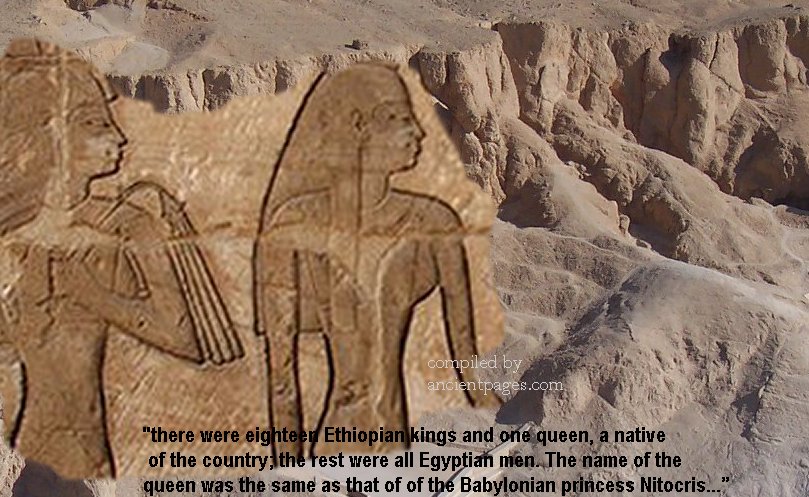Ellen Lloyd – AncientPages.com – Queen Nitocris of ancient Egypt’s Sixth Dynasty remains shrouded in mystery. Historians cannot agree whether Nitocris was a historical person or a mythical figure.

The fact that Herodotus, Eratosthenes, and Manetho mentioned her speaks in her favor as being a non-fiction person, but is it enough?
Manetho, an Egyptian high priest who lived in Sebennytos (in the Delta) during the Third Century B.C. and studied at the famous library of Alexandria, described Queen Nitocris as the bravest and most beautiful woman of her time.
He credited her with building the Third Pyramid and stated she reigned for twelve years. Eratosthenes of Cyrene (276 B.C. – 194 B.C.), a Greek mathematician, geographer, poet, and astronomer, wrote that her name meant Athena the Victorious, and she was supposed to reign for six years.
Herodotus (484 B.C. – 425/413 B.C.) is the Father of History and is famous for his work “Histories.” He gives a colorful picture of Queen Nitocris’ life. He writes, “After Menes came 330 kings whose names the priests recited from a papyrus roll. In all these generations were eighteen Ethiopian kings and one queen, a native of the country; the rest were all Egyptian men. The queen’s name was the same as that of the Babylonian princess Nitocris…”
Herodotus wrote that Queen Nitocris committed murder and later suicide to avoid the consequences of her actions. Queen Nitocris, Herodotus wrote, ascended the throne after her brother, also her husband, was killed.
To avenge his death, she came up with a deceptive plan. Herodotus wrote, “she devised a cunning scheme by which she destroyed many Egyptians. She constructed a spacious underground chamber and, on the pretense of inaugurating it, threw a banquet, inviting all those she knew to have been responsible for the murder of her brother. Suddenly, as they were feasting, she let the river in upon them by means of a large, secret duct.”
Later, she committed suicide by running into a burning room to escape vengeance. Our current knowledge of ancient history does not allow us to say whether there is any truth in the story of the queen’s life, but Herodotus was convinced she did exist.
He further wrote that “after Menes came 330 kings whose names the priests recited from a papyrus scroll. In all these generations were eighteen Ethiopian kings and one queen, a native of the country; the rest were all Egyptian men. The name of the queen was the same as that of the Babylonian princess Nitocris.”
Historians have difficulties accepting Queen Nitocris as accurate because she is not mentioned in any native Egyptian inscription. She was allegedly the last female pharaoh of her dynasty and rose to power circa 2148-2144 BC, but there are no records of her reign.
For some time, it was believed that she was mentioned in the Turin King List under the Egyptian name of Nitiqreti. Later, scientists discovered this ᴀssumption was wrong.
Manetho stated she constructed the Third Pyramid, but we need to find out whether it was at Giza, and there are many pyramids in Egypt. It could have been any one of them. Archaeologists have not discovered her tomb, monuments dedicated to her, statuary, or texts. With solid evidence, it is therefore possible to prove Queen Nitocris was a historical person.
Modern historians disagree; some declare Nitocris a queen, and others say she is a mythical figure.
Written by Ellen Lloyd – AncientPages.com
Updated on Oct 1, 2023
Copyright © AncientPages.com All rights reserved. This material may not be published, broadcast, rewritten or redistributed in whole or part without the express written permission of AncientPages.com
Expand for references
Tyldesley – Chronicle of the Queens of Egypt
Newberry, Percy E. “Queen Nitocris of the Sixth Dynasty.” The Journal of Egyptian Archaeology 29 (1943): 51-54. doi:10.2307/3855037.





